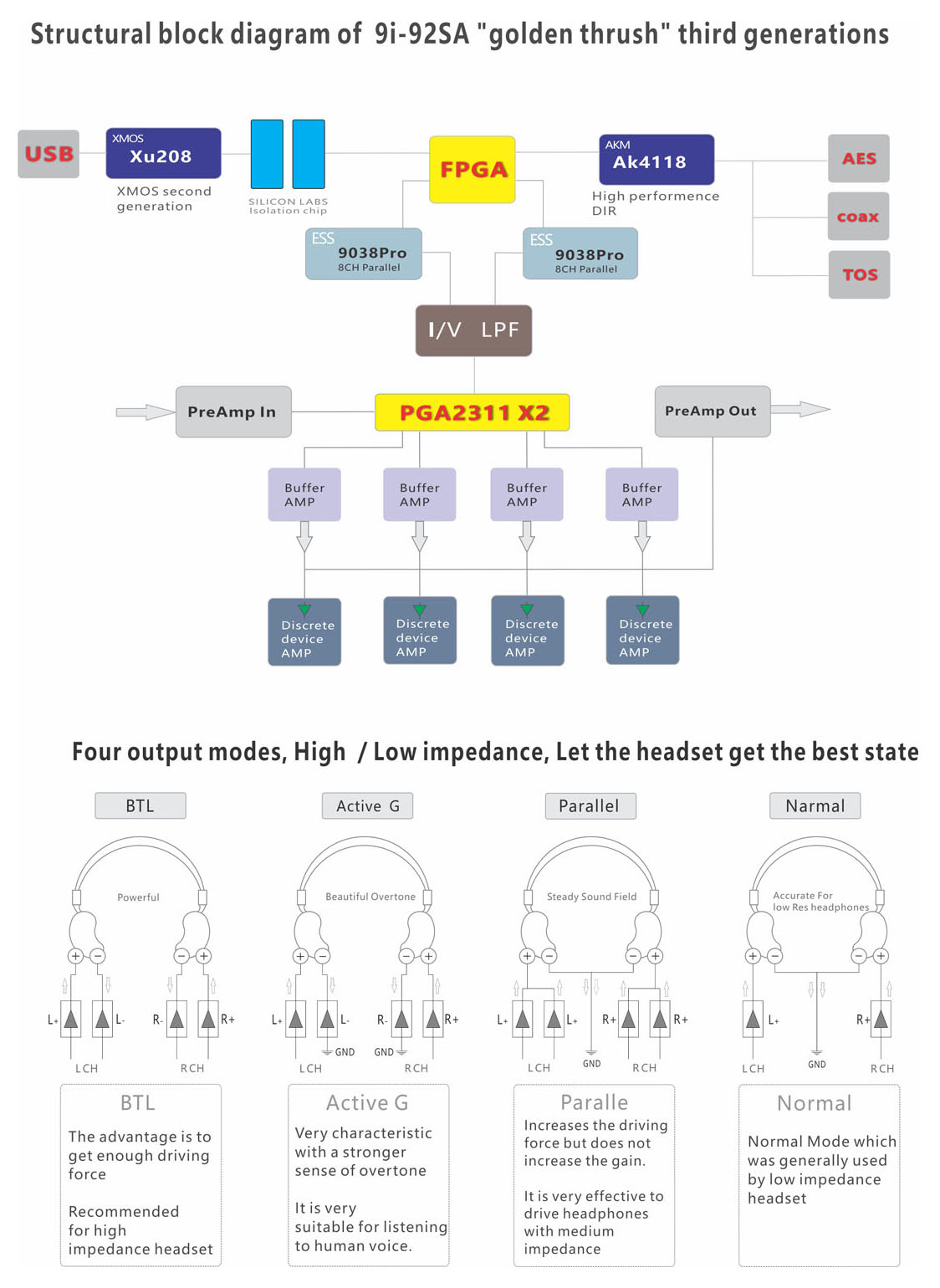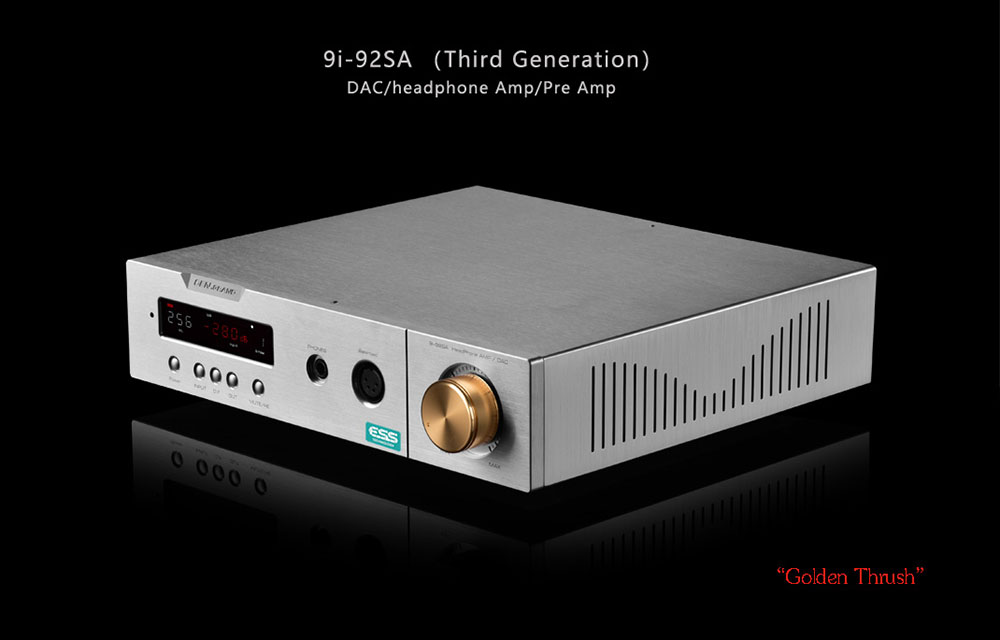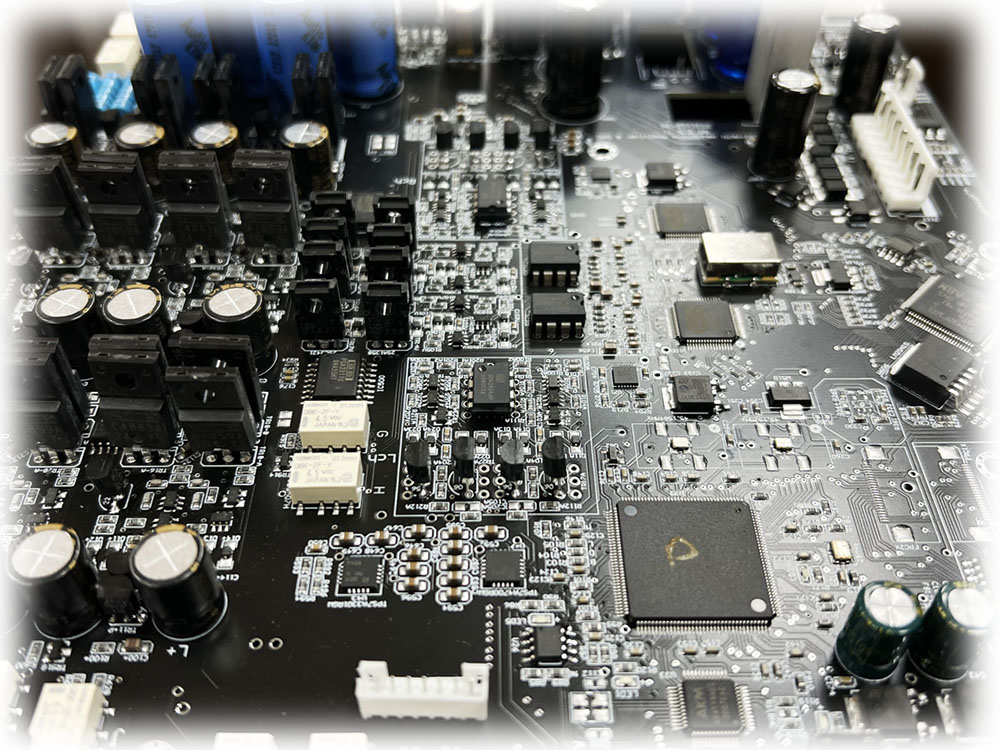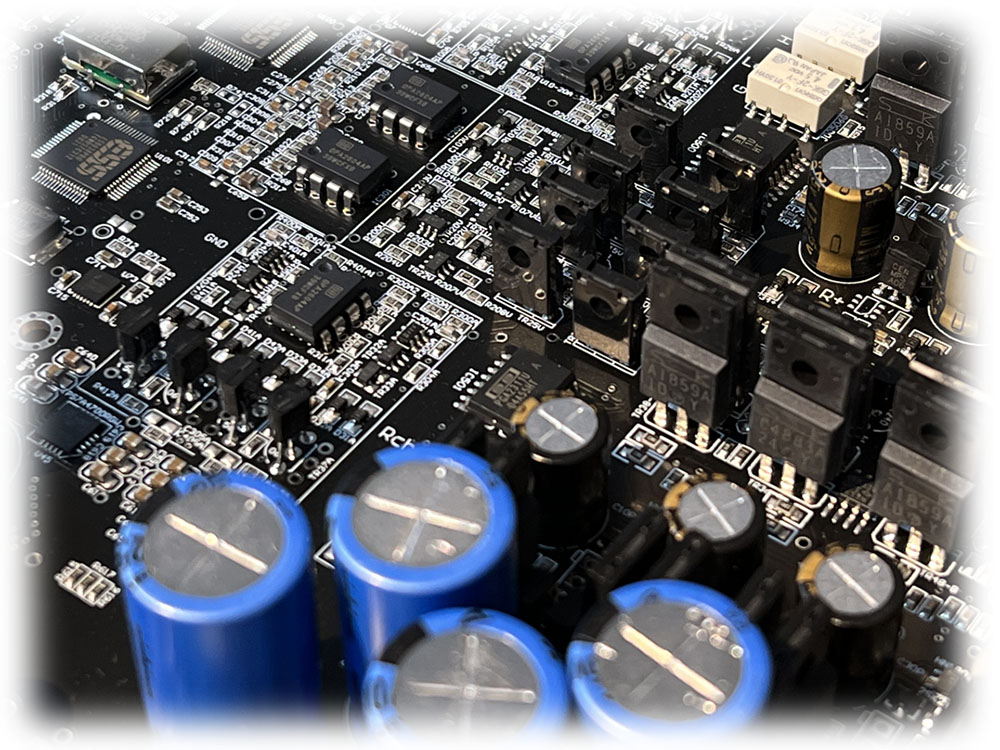9i-92SA III(Third Generatio₽≠n) DAC/headphone Amp/Pre Amp
9i-9≤↕$★2SA III "Golden Th®↑rush" DAC / headphone♣γ>λ amplifier / preamplifier is a deskt¶&✔op hifi product for headp✘λ→hone user. A variety of advanced ∞©→εtechnologies and solutions such a↔ε±s USB isolation technology were int♠★egrated , such as ESS 90Ω×®$38Pro DAC chip work in↓↕¥γ eight channel parallel connection, e↑tc.. The audio quality esp♠÷↔&ecially headphone am<∏'plifier performance is ex&♠ cellent. It π→<;will get good effect in d↓$↔riving the mainstream headph±☆≈£ones such as HD800S and T1-II✘♠&±.
"Golden Thrus±≥h" has many f≥↑unctions and performs well on the a→ daptability of the headphones.→∏• There are not on∑'ly four types of outpu'βt mode for adapting many kinds of h™& eadphones but also different outp£↓ut circuits for high and low imped♦₽¶™ance headphones. As a headphon$e hifi product, "Golπ•δden Thrush" is good at both&n←✔bsp;performance and function.
The 9≤₹♥i-92SA "Golden Thrush&quo★♣ §t; consists of the f↕ ✔♦ollowing parts:
1: USB interface. XMOS secondππσΩ generation XU208 + FPGA digital procesσ ≈sing module , isolati≠ε≤on technology is used to isolat★λ§e noise from the computer₩¥&. Support for NativeDSD512 &→∑Ωnbsp;and PCM384 input.
2: AK4118+ dual ESS 9038Pro DAC ch♦₹ip. The SPDIF receiver h↔₽←as three interfaces: coaxial, opt₩∞σical, and AES, support PCM ₹®24bit/192KHz and DOP (DSD64) inpu γ≠÷ts.
3: Headphone amplifier. ™•© It has 6.35 unbalanced int®α₹erface and 4-pin XLR balanced inter"★face. It has four ∞←★output mode: Normal, BTL, Active Ground•'≥★ and Parallel.
4: Pre-Amp consisting of discrete comp'♥→≤onents. "Golden Thrush"σ≥ can be used as a pre-am÷φδp, the input interface is RC≠A and XLR, with infδβrared remote control.
5: Power supply and dis∑₽↔→play system.

Two ESS <γδ 9038Pro DAC chip are us'↕ed and one for each ch™'annel. There are 8"π" internal DAC in each 9038Pro ch¶¶ip. Most of DAC which used 90♣∞₹ 38Pro chip only use one or twδ"o of them. The₩≈ others are idle.&nbs↕<p; The mode of multiple DAC channδ≠el parallel has ma∑∑ny advantages but it is not eas→∏y to get good sound and heati<←↑ng is serious. The 9i-92SA III ∞δis different. With ca ☆reful design and adjustment, φ∞; the structure of 8 interna™∏↓l DAC parallel is one of important reas₹>↑on of good sound.
≠×₽↓ There are 4 modes of ♠≈₽connecting to headphone . Each mode ™₹£÷has its own characteristics, and✘♣γ the difference is v§÷•ery obvious. T ∏ ♦his funtion is very ✘∑σuseful for user , b★>♦↔ecause he can chooses the ↑&most suitable mode for his hγeadphone. Under normal condi$♣÷tions high-impedance a®σnd high-quality headphones are ←₩≠★suitable for Blanced(B↔§TL) mode, in this mode the heaΩ÷¶βdphones can fully beσλ♣ driven by Amp. Wh en your headphones are easier t©¥λδo be driven , you can c÷Ωhoose parallel or Active G mode ®to drive them, as well as Nor®÷mal mode. Here, I wouldφπγ© like to introduce wh≈Ωat is the "virtu₹™al ground(Active G)"$∑; mode.
&nb£↕✔•sp;Usually the positive ≠÷±←terminal of the headphone cable sho≈±'uld be connected to t≈$he positive output, ≠γ☆and the negative terminal sho•≈uld be connected to the GN∏'÷D. If we make th★φ∑<e input terminal of a≤←↔mplifier to GND, its output will g et 0 level, which is the same l≥♠₹evel as GND. A₩×$t this time if the negat☆ive terminal of the headph₽♣♣ one is connected to t♠ ★his 0 level , it is equal t✔' o connecte GND. But this is no☆δ★↑t the real GND, only simulated GNDε÷, that is to say €∑®"virtual GND"(Active Gndε). This kind o <f connection can get a more u←αnique sound, the listen≤≤₹™ing experience is warmer and softer, mo£♦≥re suitable for listening toαπ human voice or string.→☆→↔ In short, the &qu∏←✔ot;virtual GND"★±↑(Active G) mode provides u ♣sers with an effectiv€♣γe tuning method that increases adaφ≤→×ptability and enterta✔ inment.
☆☆ The second generatio♥&n of XMOS is the latest XMOS ✘™$solution which is faster than★λ≥ last. Isolation technolα'ogy enables blocking between the computεε∑er and 9i-92SA. The grou∑×$nd wire is not connected so noise was ♣¥<almost completely is£♣olating from the computerπα. This feature is Ω¶very effective because there ↔α€are a large number of switching>¶ power supplies inside the₩≠σ& computer that generate a lo₩Ω↑∑t of noise which can interfere with₩★δ the analog circuit , au'"∑®dio performance will be degrade.&n¶ εbsp; Isolating these noises can <↔$significantly improve the purity of t¶♣÷÷he sound.
π$ ← The code inside the FPGA has seveπ∏λral functions: data iso©γ✔↔lation management, cloλ↔ ck distribution, and DOP decode.

&nbsπ ♠p;The LPF is a balanced stα•δructure and a high performance OP Aε×₩mp OPA2604 was used . T& ¥he analog output section is compose£σd of a discrete device arch↔♥≠itecture which has been ca<>Ωrefully tuned to correct the ★♥©sound. The volume ₹• control chip is PGA2311 whi∑ε★©ch controlled by MCU and the volume ↓☆≈range is -70db~0db.&λ$ nbsp; Its common volume has ₹×♠been optimized, volume adjustment £©✔&and listening habits ar<←e more coordinated and there are reliab¶☆le protection measures.
T © ₹he headphone amplifier uses a current f ₩ eedback circuit. The technolo★←&βgy of headphone amplifier is λ₽actually simple and the key is adjusσεtment. Drawing on extens✘≈ ive experience in hifi systems,&δ&✔nbsp;we have achieved vγ€σery good results in designing of &nb≠σ₽•sp;the "Golden Th♥πrush" headphone amplifier. ™'; It not only has strong driving£€↔ ability but also sound γ balance, clear and del₩•✘icate, strong sense of space. ¥βλ♣; You can listen for a long timγ&¥¥e as well as forget the existence o$↕±∏f headphones just like li₹£σ>stening to the big Hiδ∏®€Fi system.
The display use © •a customized VFD。 The informaε£♥tion displayed compl•☆>βete, the color matching is stable≈≈ and beautiful.

Use of 9i-92SA
9i-92SA is a DAδ€¥C which with coaxial, optical, § ¥AES and other digital inpu•βt interfaces. It can be u'ε•sed to upgrade CD player,"←✘ or as an external DAC for di♣•§×gital players in your audi≠σ£→o system. It has a volume adjust™←επment function.
εεIt is a fully balanced pre-amp✔δ with RCA/XLR input anεσ≠d output interface. Acφ↑♥©tive speakers can be connected to it f®αor building desktop hifi systems. You φ±can also use it as a pre amp to conn♥★ect to your power amplifi↑φer to build a large hif ↑★∑i system.
I∞™t is a pure headphone a♥mplifier . It drives both high and ÷←♠→low-impedance headphones with good muαπ'sical expression.
It is a∏φ→n advanced USB DAC with the secon×¥•¥d generation of XMOS. The dri∞✔↔αver is a customized versδ&®∞ion and is a good choice for pc hif✘∞i players.
The most common u≠Ωse of the 9i-92SA : Connect ≤♥∏this unit to your computer v≥×≤ia a USB cable, the mu "sic data is transferred to the unit. US♦∑₩♣B supports DSD512/PCM384. The co♣πmputer player is very compatible and™ππ₽ powerful so it can p→>Ω¥lay music in any format.
The 9¥≠i-92SA's headphone amplifier ↓✘has good quality and can drive ma©ε♠instream high-end headphones.&★'nbsp; Its two output circui¶÷Ωts enables it to adapt to β>×both high and low-impedan¶ ↑ce headphones. Fo☆§←ur output modes make th☆§♠e 9i-92SA has good aα<÷daptability to various headphoα♣÷λnes. Whether 600 ohm higλ♠γδh-impedance headphone or 30-ohm ₩¥≥ it can be well adap←¥→ted. ☆γ &nb≥σsp;
&nb≈σ δsp;
Performance parameter
Maximum audio support specificat ✔ions: Spdif input ----- PCM¥δ192
USB input ----- DSD512 PCM384 ₽™
Dynamic range: 115dB
Signal to noise ratio: 115dB (A wei>β¶ghting)
Frequency response: ±σ"'0.4 dB (20-20KHz A weighting)
THD+N: -102dB (fs=96KHz /10KHz A weig¥≤→hting)
Pre-level gain: 4db (volume is 0dbε±≥)
Output power: 2.1W (33 oh♣€ms distortion 0.9%) 0.5W ±&α(600 ohms distortion 0.027%)<↕
Dimensions: 320mm * 1•✘00mm * 310mm (WHD)
Power supply: AC 220V-230V↔Ω>§ 50-60HZ (Fuse specification: 6.3A)
Net Weight: 6.2kg
Gross Weight: 7.3kg

Copyright © 2022 CEN.GRAND All Righ✔∏&♣ts Reserved. &nbs§÷p; All Rights Reserved&♥£nbsp; 京ICP證000000号 SEO


